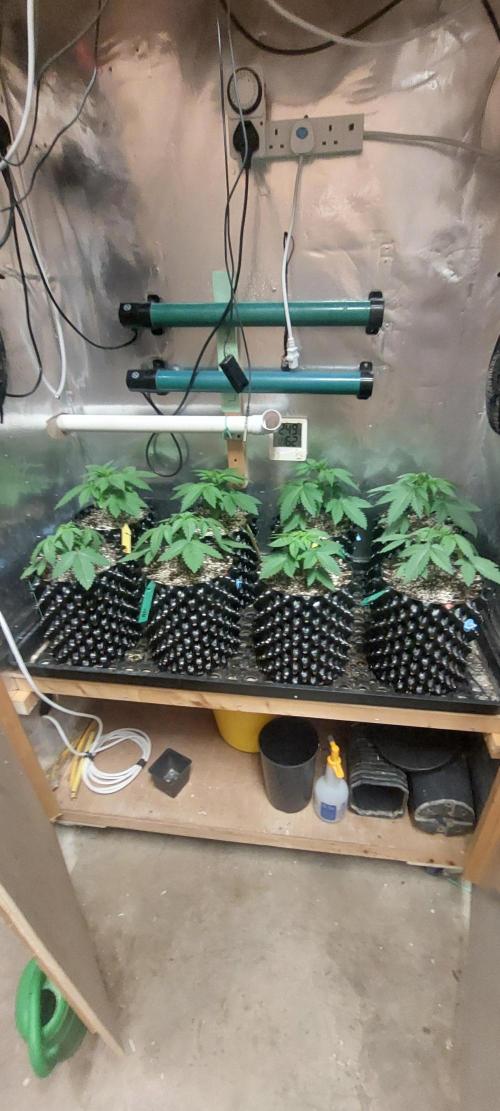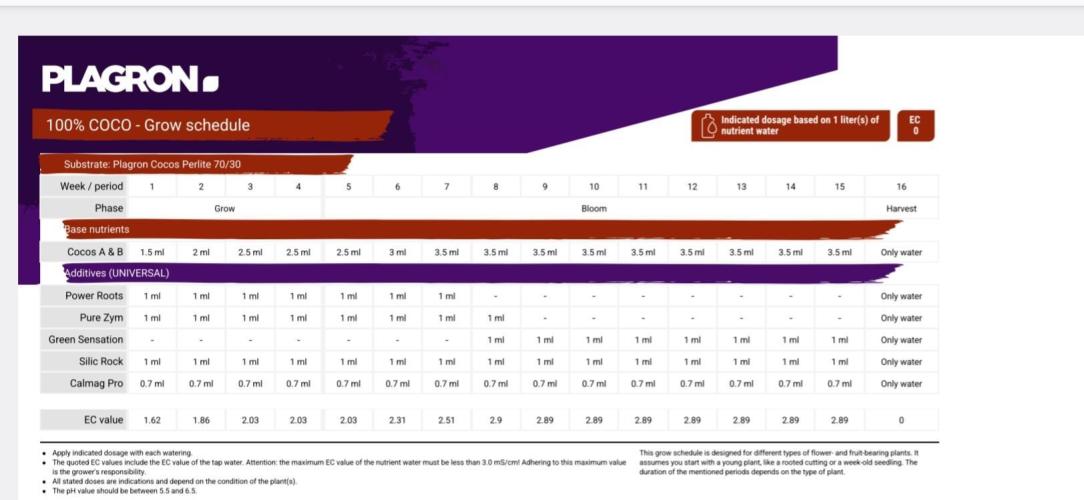By continuing to use the website or clicking Accept you consent to our cookies and personal data policy and confirm that you are at least 18 year old. For details please see Privacy Policy and Terms
Accept
EC values too high?
Willcee43started grow question 12d ago
Hi Growers I'm growing in coco and Plagron nuits for a few years now and I get the feeling that the EC values are too high on the Plagron mix calculator.
I'm going end in 50ltr pots and flip on wk 5. What EC values do folk use? Thanks ahead of time
Solved
likes
m0useanswered grow question 12d ago
They do want you to use more to buy more. its a known thing. Just use what the plants asking for and keep an eye on the EC then make notes.
Not a fan of Plagron, they have a lot of "magic" in their ingredients and don't disclose what shit is then charge an arm and leg for it.
Not great business practices won't use their stuff. When they are asked or call out about it. Radio silence. Says a lot about them.
Use up what you got and then switch to a different brand with better credibility.
00110001001001111Oanswered grow question 12d ago
sorry, with tap up near 1.9-2.0EC. i stated 1.5-1.6 but that is bad math.
The fertilizer is what matters and that's around 1.3EC. what the tap adds is only a problem if it raises EC so high it impedes the availability.
1 like
Complain
00110001001001111Oanswered grow question 12d ago
EC is an overall measurement that is unresolved, especially for a soilless/hydro context. (is that the case? usually for 'coco')
you can have a so-called ideal EC and still have an out of balance mix of nutrients that will inevitably lead to problems. this is why it is 'unresolved.'
You feel it is too high? Are you running into toxicity symptoms consistently with each grow? - may not happen to all plants but if it repeatedly happens that's a reflection of the fertilizer formula that can be improved.
--- The rest only applies if this is a soilless/hydro context and that feeding schedule doesn't not look like it is the case
I calculate elemental ppm. Converting to EC is 1 of several conversion factors - so obviously a ppm value calculated from EC or ppm to EC is absolutely garbage. (see url below)
on a "500-scale" device my ppms would be 1.3-1.4 EC range (650-700ppm). That does not count the EC my tap watater adds (probably up near 1.5-1.6 with tap water as my tap is fairly hard at 300ppm). The other note - gauranteed analaysis percent of mass is a minimum amount, it's possible it's higher, too. Nonetheless still more accurate than converting EC, which is a garbage ppm value. EC is accurate. EC converted to ppm is not (or vice versa). sounds confusing but conductivity is important that it is not too high, so it is important to watch as is ppm. They are correlated, just not as strongly as people perceive
The fact your schedule goes as high as 2.89EC likely means this is not a soilless context and not an apples to apples comparison with my numbers. This is coco treated like a soil. so you won't get any of the elevated growth rates of soilless/hydro method. Your numbers are higher because a portion of the fertilzier is not plant-available. So by comparison the EC value is blaoted by some portion of some nutes that are being broken down by microbes and some portion that is already broken down and avaialble to the plant - you need more 'nutes' in the soil than a soilless context for this reason, because some portion of it simply cannot enter the plant, yet. If we could discern between the two 'forms', your plant-available related portion of the EC measurement should be similar to a soilless/hydro context - comparing healthy plants only...
The goal for both is maintaining a healthy level of all nutrients (plant available) around the roots. Not all of it enters through "mass flow." A portion is drawn in through "active transport." So, it's not about providing at the ratio in which it is used... it's about availability around the roots. Active transport is why the nute ratio can change. Another benefit of soilless is that the 10% runoff mitigates the plant throwing the nute balance out of whack through active transport. each fertigation resets the ratios/concentration.
Regardless of the exact reasons why... It always comes down to observing and adjusting based on how the plants grow. Keep track of how you fertilize over time. If a tox or deficiency arises, adjust the formula and move on... for the next cycle adjust the formula from the start or at a key point to avoid the problem altogether. And so it goes... should have a rockin formula or steps throughout the rocess that results in incredibly healthy plants regardless of how many strains or different seeds your are growing. The idea that this plant picky is a myth. it's just a plant. the people tha think it is picky adhere to bro-science and wonder why things don't improve.
e.g. if i see overly lush leaves at week 5 of flower, i know N has been building up for a period of time... I need to go back several weeks to avoid it. I'll reduce N entering flower nearly 1 month earlier and avoid the problem in the next cycle. if you are all willy nilly about how you fertilize over time and add this or that at various points, it gets more complicated to adjust. consistency helps.
I regularly feed 6-7 strains from 1 reservoir. it's not hard to accomplish. it isn't a brag, because it's a simple thing to do. if systematic about refining how you fertilize, it won't take long to get there. Don't worry about the instructions or what others do... worry about the health of the plants in front of you. i got lucky. jacks is awesome as instructed. There's a reason several manufacturers all use a similar ratio - cropsalts, jacks, masterblend, megacrop, southernAG, and even the older "pro" lines of athena/floraflex, except those products are price gouging people, lol. It's all based on the same foundational knowlege instead of believing a marijuana plant is some sort of special case and 95% of the time that isn't true. Marijuana brands want to re-invent the wheel for no reason and they make it oval, lol.
https://waternitylab.com/ec-to-ppm-conversion/ -- there is also a "1000" scale conversion, lol. At least 4 different ways to calculate ppm from EC that are drastically different.
1 like
Complain
Ultravioletanswered grow question 12d ago
Depends how you measure, alot of people are taught to measure using a tds metre and to read the water going in and out.
Tds doesn't read actual salt ions though just total dissolved solids. So it's not as accurate and requires conversions to be so.
EC of the soil is measured using a tool very similar to a pH metre. And only requires you read the soil once.
Good ec for germination is 0.3ms/cm -0.8ms/cm.
Working up to anywhere 1.8ms/cm
Around 1.6-1.7 tips will begin to show slight signs of osmotic stress.
Gluck.
2 likes
Complain











